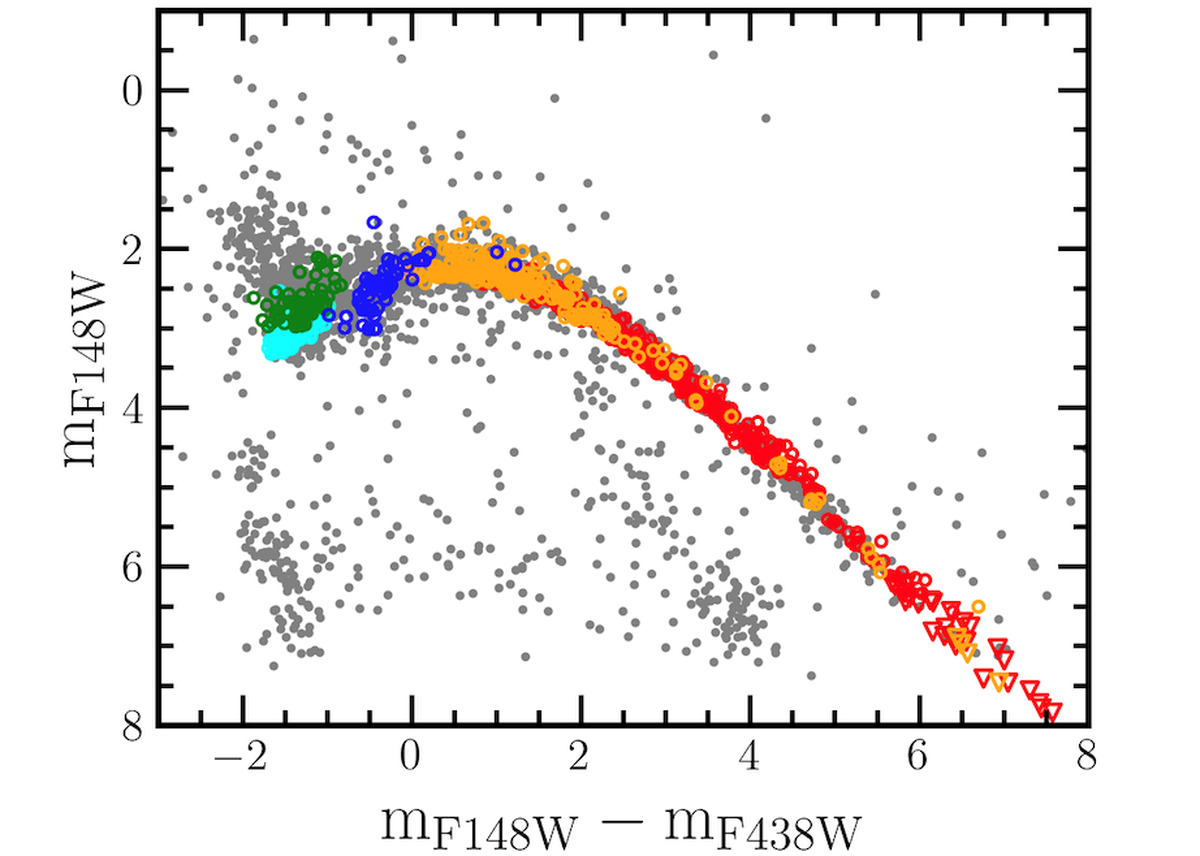[ad_1]

A false colour image of the globular cluster Omega Centauri was obtained using AstroSat/UVIT. The stars, as seen using the FUV filter, F148W, are shown in green colour. The red boundary indicates the field of view observed by the Hubble Space Telescope, and the yellow circular border represents the extent of the cluster core. The team found that from the inside to outside, there are 5 generations of hot stars that have an initial helium fraction from 23% to 43%, in the age range of 11-13 billion years, and other chemical differences.
| Photo Credit: Special Arrangement: Department of Science and Technology
Astronomers and scientists at the Indian Institute of Astrophysics (IIA), along with their international collaborators, while studying the Omega Centauri, which is the most massive globular cluster system in our galaxy, have found that hot stars and white dwarfs emitted less ultraviolet radiation than expected.
This has come as a surprise for the team of astronomers and scientists whose research work has been published in The Astrophysical Journal.
“To our surprise, we found that the hot Horizontal Branch (HB) stars and white dwarfs in Omega Centauri were somewhat strange, that they emit relatively less light in the ultraviolet,” said Prof. Annapurni Subramaniam, director of IIA and co-author of the research work.

The brightness of the hot stars in the UV is shown on the y-axis versus the relative brightness in UV with respect to the visual brightness. Note that the light blue, blue, and green points were expected to fall in the same line as the red-orange stars, instead, these points are found deviating. The team performed detailed simulations to compare the observation with the models that required 5 generations of stars to fit the observed distribution of hot stars (2 times to 10 times hotter than the Sun). The generations are shown in 5 different colours.
| Photo Credit:
Special Arrangement: Department of Science and Technology
The team detected strange hot stars in the cluster using the Ultraviolet Imaging Telescope (UVIT) images on AstroSat (India’s first dedicated space observatory, which has been operating since 2015).
The team found that these hot stars emitted much less ultraviolet radiation than expected from theoretical models and, in comparison with stars of another globular cluster, M13, having similar overall properties.
The IIA team combined the data from UVIT with archival data from other telescopes like Hubble Space Telescope and Gaia and used diagnostic plots called colour-magnitude diagrams (CMDs) to separate stars in various evolutionary phases.
The team investigated this anomaly further by simulating the distribution of the HB stars in the Far Ultraviolet(FUV) — optical CMD. The cluster was found to consist of at least five populations of stars with varying ages and chemical compositions, including those formed with significantly high content of helium.
The enhancement in helium could be one of the reasons for the lesser far-ultraviolet radiation emitted by these stars. About 24% of the HB stars were found to be helium enriched and older and segregated towards the cluster centre than those with normal helium content.
“We could therefore conclude that these second-generation helium-enhanced stars were formed from the gas ejected by the cluster’s first-generation giant stars, “ said Deepthi S. Prabhu who is part of the research team.
[ad_2]
Source link








